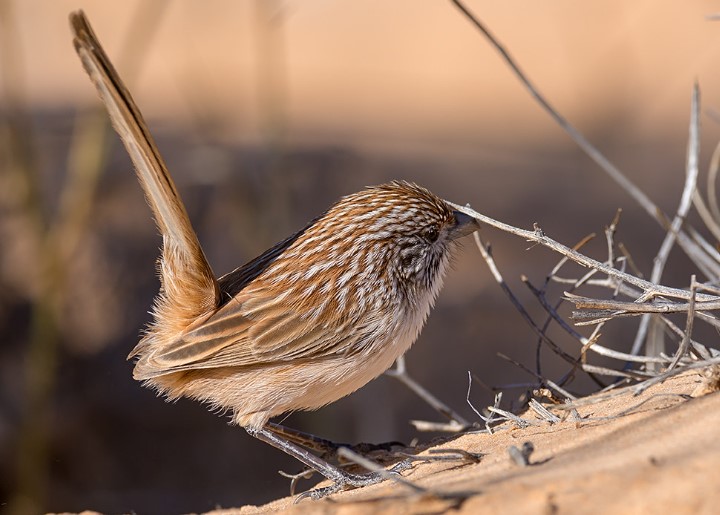Are Dracula parrots real? You may have seen several photographs circulate online. So, here are some interesting facts about Dracula Parrot, you would love to know. There are some fascinating facts about the Dracula parrot, and it deserves protection. The vampire-looking bird is endemic to Papula New Guinea’s hills and montane rainforests mostly 600 to 1500 meters.
Other Names: Dracula parrot (Psittrichas fulgidus) is also known as Pesquet’s parrot, or the vulturine parrot.
Family: It is the only member of its genus (Psittrichas). It belongs to the superfamily of true parrots, Psittrichasiidae.
Location: The location is Crater Mountain Research Station, Chimbu Province, and Lake Kopiago, Southern Highlands, Papua New Guinea.
Call: The call is screeching aaa-aar…aaa-aar. Lower montane forests and tall secondary growth; arboreal; singly, pairs, small groups; noisy and conspicuous.
Size & Weight: This large parrot has a length of approximately 46 cm and weighs approximately 680–800 grams.
Migration: There is no evidence that the Dracula parrot migrates, but it does seem nomadic, especially during periods of scarcity of its favorite fruits.
Dracula parrot (Psittrichas fulgidus) is also known as Pesquet’s parrot, or the vulturine parrot.
Also Read: Red-cheeked Parrot – A Colorful and Charismatic Parrot Species

Species that are Related: Palm Cockatoo (Probosciger aterrimus) is similar in distant flight but has no red on wings or underparts. Eclectus Parrot (Eclectus roratus) is also similar in distant flight but with green or red plumage. Moreover, a parrot like this can easily be confused with a Brazilian parrot known as a vulturine parrot (Pyrilia vulturine).
Identification: Besides having black plumage with greyish scaling on the chest, it has a red belly, uppertail coverts, and wing panels. Its long, hooked bill and bare black face, combined with its relatively small head, give it the appearance of being unusually small-headed compared to other parrots. The alternative common name is due to its somewhat vulture-like profile.
Behavior: There is no doubt, that with its exclusive call and exceptional plumage, it is a unique species. The species may be saved from extinction with the help of conservation efforts. It is a social creature and loves to live in groups of up to 20 individuals. It is usually seen in pairs or groups. Rapid flapping alternates with short glides while in flight. As a bird enthusiast, the Dracula parrot is an entertaining bird to watch. They can be seen climbing in their flocks and chasing each other around. It is a highly intelligent species and can be trained to do some simple tricks. A Dracula parrot may be aggressive towards a human attempting to hold them in captivity because they are not raised to be pet birds.
Diet: The Dracula parrot is also a remarkable species when it comes to its diet. It has a very diverse diet and habitat, which will eat almost anything it can get in its beak. It feeds almost exclusively on figs, one of the few species of frugivores common to the Pesquet’s parrot family. It also eats flowers and nectar. Depending on fruit availability, it is seasonally nomadic in some areas of its range. This adaptation avoids feather matting from sticky fruits by leaving the top of the head bare. It loves fruits, nuts, seeds, and insects. It is also known to be a scavenger, and will often eat carrion if it is available.
Status: It is highly prized for its feathers. Overhunting has been caused by this, coupled with high poultry farm prices. The loss of habitat is another ongoing issue. According to the IUCN Red List of Threatened Species, it is considered Vulnerable because of these reasons. Poachers are attracted to the Dracula Parrot because of its mesmerizing feathers. Therefore, the Dracula Parrot faces a serious survival threat. The species is currently listed as endangered, and its population has declined since the 1980s. The main threat to the species is habitat destruction, as large areas of its native forests have been cleared for human settlement.

A Dracula parrot? What does that name mean: It has a long beak, hooked, and its scary black, featherless head gives it a dreadful appearance. Moreover, the black and red feathers on its wing also remind people of the cloak worn by bloodthirsty vampires. At midnight, it also lets out loud, rasping screams.
Nests & Eggs: It is unclear how it breeds in the wild. Nests are typically found in hollow trees, where two eggs are laid.
Other Facts:
-
Scientific Name: Psittrichas fulgidus
-
Family: Psittaculidae
-
Kingdom: Animalia
-
Phylum: Chordata
-
Class: Aves
-
Order: Psittaciformes
-
Genus: Psittrichas
Also Read: Paradise Parrot (Psephotus pulcherrimus)

Are Dracula parrots real? You may have seen several photographs circulate online. So, here are some interesting facts about Dracula Parrot, you would love to know.






